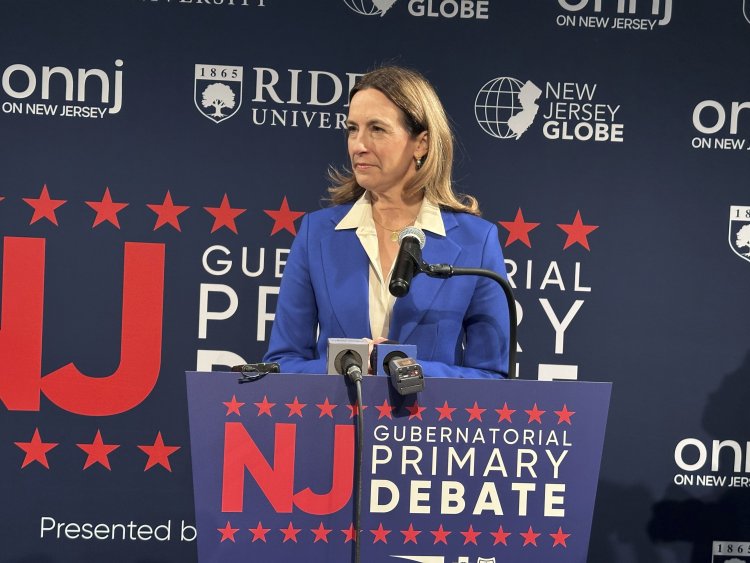New Jersey’s gubernatorial candidates seek external support in the last weeks of the primary
"Redboxing" has emerged as a prevalent strategy in campaign efforts.

In a memo sent to “interested parties” on Thursday, Rep. Mikie Sherrill’s campaign manager, Alex Ball, emphasized that “the key factor down the stretch of this race will be face-to-face contact with voters.” The memo outlined the campaign’s “top targets,” which include Hispanic and Asian voters, alongside white women on the vote-by-mail list who participated in at least three of the last four Democratic primary elections. Additionally, the campaign identified “next targets” as Asian and white voters who either did not vote or only cast ballots once or twice in the past four Democratic primary elections.
The campaign even specified where these targeted voters could be found, categorized by county and municipality.
These instructions can be accessed through the “media” tab at the bottom of Sherrill’s campaign website. The page also features materials that could assist a super PAC in creating advertisements to support her candidacy, including her key talking points about her background and legislative achievements, as well as various photos and videos from her campaign trail.
This tactic, known as “redboxing” due to the use of a literal red box to highlight content, is increasingly employed in political campaigns. However, ethics watchdogs have raised concerns that it may blur the lines of unlawful coordination with super PACs.
Sherrill’s campaign had earlier released a redbox memo indicating that “the key group of voters will be Black voters with a history of voting by mail, most especially Black women who receive their political communications in the mail.”
Super PACs play a significant role in the gubernatorial race, providing candidates with financial advantages due to the public matching funds program in the state. Outreach efforts are crucial as the election nears, particularly given that a substantial portion of the electorate may still be disengaged.
Sherrill is not the only Democratic gubernatorial candidate to share their messaging strategies on campaign websites; however, the focus of others has leaned more towards advertising than direct canvassing. A recent Rutgers-Eagleton poll reported that when asked about the date of the next election in New Jersey, only 4 percent correctly identified the June 10 primary, while 20 percent guessed sometime in June, and over a third thought it was in November.
On a section titled “resources,” former state Senate President Steve Sweeney offers b-roll and outlines “messaging guidance,” asserting that “voters — particularly those in South Jersey — need to hear now on digital/streaming and mail that Steve Sweeney is a working-class, lifelong union ironworker with an agenda to help working-class people.” Earlier versions of this page had included references to male or older voters, or those without college degrees in Central/North Jersey, but those references were later removed. His page also underscores his policy achievements, highlighting his stance on crime and a senior-focused initiative to eliminate state retirement income tax.
Rep. Josh Gottheimer’s campaign has similarly provided regular “campaign updates” on its website. In a memo dated May 4, campaign manager Chelsea Brossard highlighted Gottheimer’s tax cut plan, asserting he will “stand up to Trump when he messes with Jersey.” She warned that “TV will be especially crowded the last two weeks of the campaign, and it’s important to reserve preferred inventory as soon as possible.” Two super PACs supporting Gottheimer have reportedly spent over $14 million on ads, although no reservations are currently booked for the final weeks of the campaign.
An update from April 17 emphasized advertising in the New York and Philadelphia media markets as well as YouTube promotions. The campaign’s data indicates that Democratic primary voters without a college degree, especially white men and women aged 45 and older, along with Hispanic and AAPI voters, are particularly receptive to Gottheimer’s messaging. His YouTube page also contains b-roll.
While the use of redboxing is common among candidates nationwide, it is not explicitly prohibited by federal regulations. In contrast, New York City has imposed stricter guidelines, and campaign finance regulators recently cautioned candidates about coordination between campaigns and super PACs following reports on former New York Gov. Andrew Cuomo’s use of redboxing. New Jersey, however, lacks clear regulations addressing this practice.
Ramin Sohrabi for TROIB News












